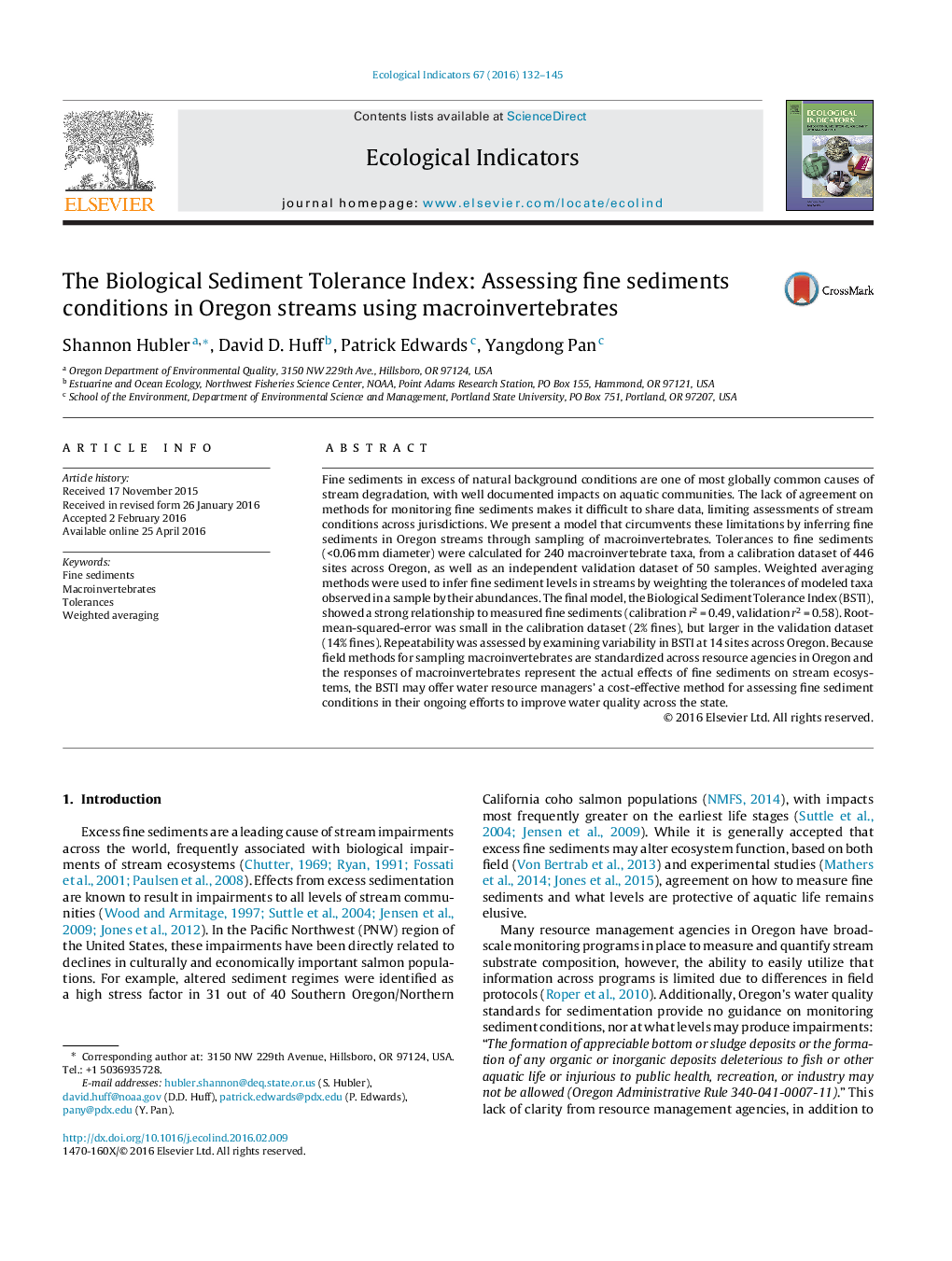| Article ID | Journal | Published Year | Pages | File Type |
|---|---|---|---|---|
| 4372861 | Ecological Indicators | 2016 | 14 Pages |
•Aquatic macroinvertebrate tolerances are used to infer fine sediments in streams.•Tolerances were calculated for the smallest fine sediment particles (silt and clay).•BSTI represents a cost-effective screening tool for assessing fine sediments.•BSTI allows for increased data sharing across resource agencies and citizen groups.
Fine sediments in excess of natural background conditions are one of most globally common causes of stream degradation, with well documented impacts on aquatic communities. The lack of agreement on methods for monitoring fine sediments makes it difficult to share data, limiting assessments of stream conditions across jurisdictions. We present a model that circumvents these limitations by inferring fine sediments in Oregon streams through sampling of macroinvertebrates. Tolerances to fine sediments (<0.06 mm diameter) were calculated for 240 macroinvertebrate taxa, from a calibration dataset of 446 sites across Oregon, as well as an independent validation dataset of 50 samples. Weighted averaging methods were used to infer fine sediment levels in streams by weighting the tolerances of modeled taxa observed in a sample by their abundances. The final model, the Biological Sediment Tolerance Index (BSTI), showed a strong relationship to measured fine sediments (calibration r2 = 0.49, validation r2 = 0.58). Root-mean-squared-error was small in the calibration dataset (2% fines), but larger in the validation dataset (14% fines). Repeatability was assessed by examining variability in BSTI at 14 sites across Oregon. Because field methods for sampling macroinvertebrates are standardized across resource agencies in Oregon and the responses of macroinvertebrates represent the actual effects of fine sediments on stream ecosystems, the BSTI may offer water resource managers’ a cost-effective method for assessing fine sediment conditions in their ongoing efforts to improve water quality across the state.
